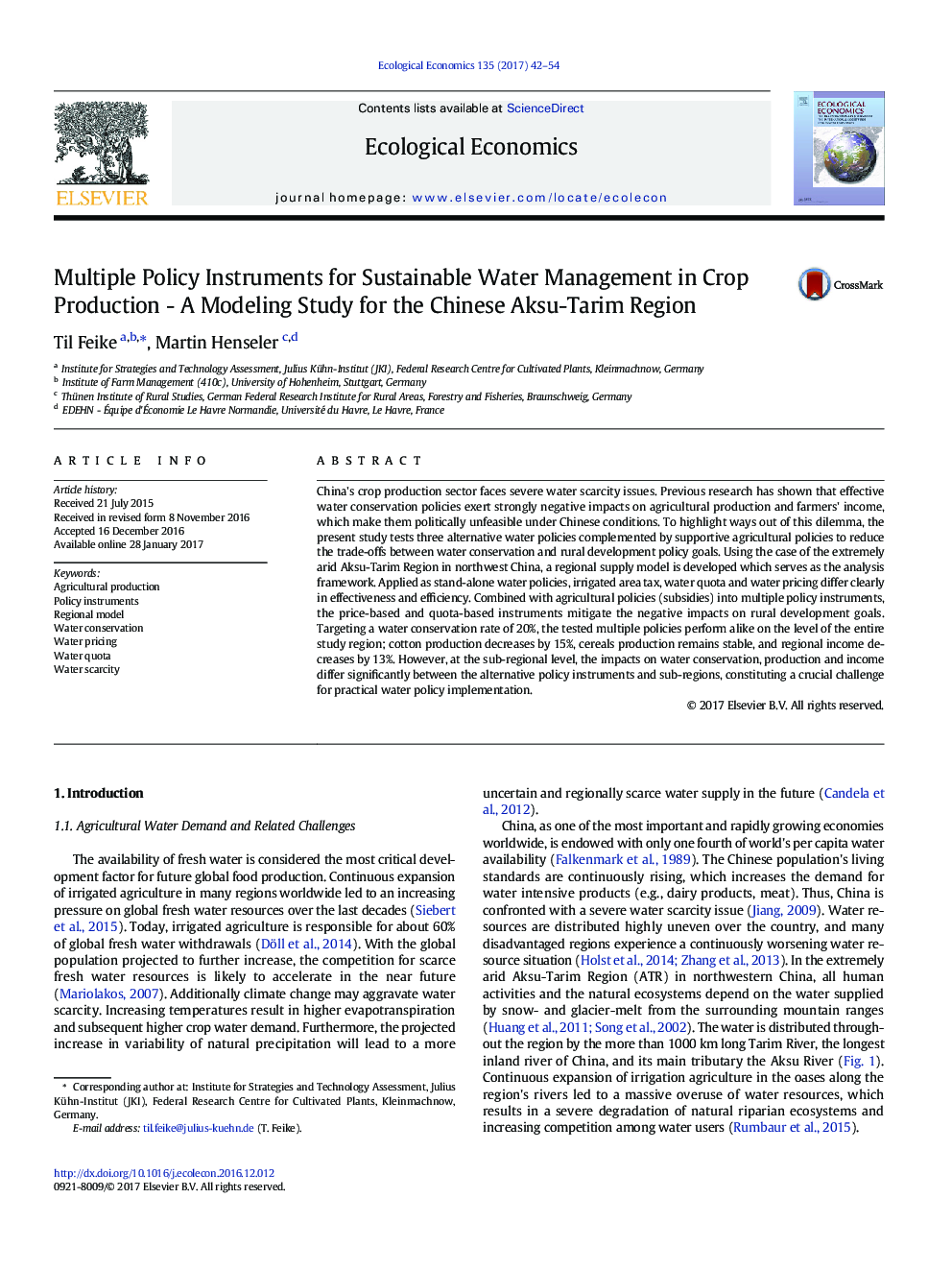| کد مقاله | کد نشریه | سال انتشار | مقاله انگلیسی | نسخه تمام متن |
|---|---|---|---|---|
| 5048769 | 1476344 | 2017 | 13 صفحه PDF | دانلود رایگان |
- A regional supply model is developed based on primary data of 256 farm households
- Alternative water policies differ significantly in effectiveness and efficiency
- Supportive policies buffer water policies' negative impact on production and income
- Water pricing-based policies are slightly better than quota-based policies
- But, regionally unequal impact is a critical challenge for practical implementation
China's crop production sector faces severe water scarcity issues. Previous research has shown that effective water conservation policies exert strongly negative impacts on agricultural production and farmers' income, which make them politically unfeasible under Chinese conditions. To highlight ways out of this dilemma, the present study tests three alternative water policies complemented by supportive agricultural policies to reduce the trade-offs between water conservation and rural development policy goals. Using the case of the extremely arid Aksu-Tarim Region in northwest China, a regional supply model is developed which serves as the analysis framework. Applied as stand-alone water policies, irrigated area tax, water quota and water pricing differ clearly in effectiveness and efficiency. Combined with agricultural policies (subsidies) into multiple policy instruments, the price-based and quota-based instruments mitigate the negative impacts on rural development goals. Targeting a water conservation rate of 20%, the tested multiple policies perform alike on the level of the entire study region; cotton production decreases by 15%, cereals production remains stable, and regional income decreases by 13%. However, at the sub-regional level, the impacts on water conservation, production and income differ significantly between the alternative policy instruments and sub-regions, constituting a crucial challenge for practical water policy implementation.
Journal: Ecological Economics - Volume 135, May 2017, Pages 42-54
